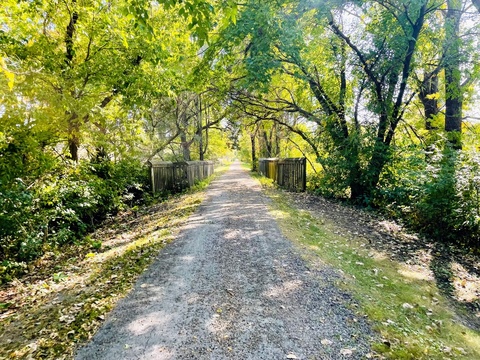When you walk through a forest of trees and wildflowers, remind yourself they all beat the odds. For a seedling to take root and grow into a mature tree, the offspring have to settle in just far enough away from their parent to develop their own root system, catch their own sunlight and pull their own water and nutrients from the forest ecosystem.
Research labs are like those trees. Labs like the Health, Brain & Cognition (HBC) Lab at the University of Iowa are typically born from a new faculty member who has completed their training with an established lab and
mentor, culminating by earning their doctorate degree. The forest for most fields of science is dense and highly competitive for resources. Often times after their doctorate, students take on several more years of training to mature and prepare to start their own lab far enough away from their mentor’s canopy of science.
Our HBC lab took root in January 2012, shortly after I earned my doctorate at the University of Illinois in Urbana-Champaign, with Dr. Arthur Kramer. The opportunity at Iowa was such a great fit, at just the right time personally, that I didn’t do extended training. This was the best decision I ever made, but like a seed landing in gravel, we were at a disadvantage.

For a lab to thrive, it needs a root system, trunk, and branches that grow with balance and strength. Our roots started with values of mentorship and rigorous science, and financial “start-up” support from the University of Iowa. Soon after our space in Spence Labs was established, we had our first branches. Our initial team included our lab manager, volunteer undergraduates, a part-time research assistant, and two graduate students. Together we established our first electronic database to store data, designed our first studies and the lab space that would turn those ideas to data and findings we could report in peer-reviewed papers.
Our first studies were built around two main branches, understanding (1) how single bouts of aerobic exercise affect our cognitive function and how these would impact cumulative benefits of repeated exercise sessions [1-3], and (2) how different kinds of learning and memory are impacted by aging [4-6]. We had two long-term goals. The first was to use what we learned and sprout new branches of research on how aerobic exercise impacts the kinds of learning and memory most vulnerable to loss as we age. The second was learning to design computerized training programs tuned to how we learn as we age so more of that knowledge will be retained. These new branches have grown into our NIH/NIA federally funded Brain EXTEND exercise trial, and BETTER cognitive training trial, respectively.
The EXTEND and BETTER projects completed data collection within the past year, and the data gathered supported the training and doctorates of three graduate students and two post-doctoral scholars. Through these projects, just over ten full-time staff have led as project managers or exercise specialists, and around 40 undergraduates trained in the lab to learn how to collect or analyze data. Time in the lab is a training ground for their next step to graduate school, medical school, or jobs in research industry or federal agencies that support science like the NIH or CDC.
We survived being re-planted into our new lab space in the new Psychological and Brain Sciences Building, which now provides a more nutrient-rich infrastructure for our roots and trunk. We withstood the challenging circumstances of COVID-19, in large part through the resilience of both our team and our participants. This year, 2024, our main goal is to publish our core findings from the EXTEND and BETTER trials in peer-reviewed academic journals, which is one primary way labs spread progress in their science and participate in the ecosystem of their academic field.
As a tree matures, growth in the canopy requires balanced growth in the roots and trunk. Looking ahead, it is a major priority to deepen our roots in community outreach and build our lab space and resources to support a process of science and intervention research that is bi-directional with the community whose lives we hope to improve through our research.
We learned from the EXTEND project that people can change their physical activity habits at any age, but too often the change is lost when the intervention ends. This experience has inspired our next wave of research to understand how to support health behavior change during middle- and older-age at both the individual and community level, and testing how and for whom health interventions like exercise and computerized cognitive training could have long-standing impact on brain aging. In the process, new staff and students are training and emerging.
The HBC lab is now a mature tree, extending branches, bearing fruit and establishing its own seedlings. Our challenge is to stay curious, listen to the environment and continue to grow with purpose.
1. Weng, T.B., et al., Differential Effects of Acute Exercise on Distinct Aspects of Executive Function. Med Sci Sports Exerc, 2015. 47(7): p. 1460-9.
2. Weng, T.B., et al., The Acute Effects of Aerobic Exercise on the Functional Connectivity of Human Brain Networks. Brain Plasticity, 2017. 2(2): p. 171-190.
3. Voss, M.W., et al., Acute Exercise Effects Predict Training Change in Cognition and Connectivity. Med Sci Sports Exerc, 2019.
4. Clark, R., et al., Are There Age-Related Differences in the Ability to Learn Configural Responses? PLoS One, 2015. 10(8): p. e0137260.
5. Clark, R., et al., Aging affects spatial reconstruction more than spatial pattern separation performance even after extended practice.Hippocampus, 2017. 27(6): p. 716-725.
6. Clark, R., et al., Age differences in episodic associative learning.